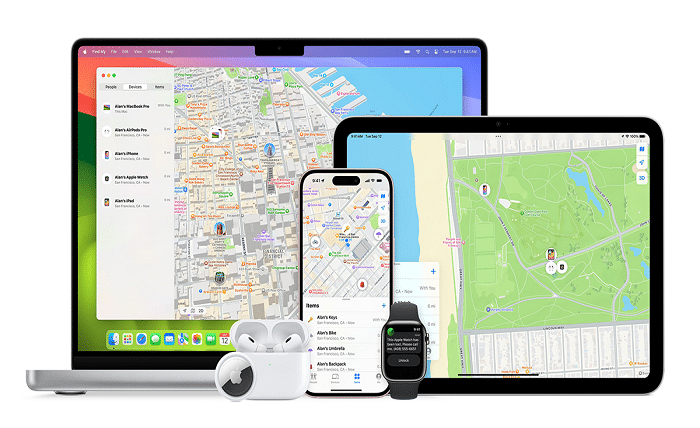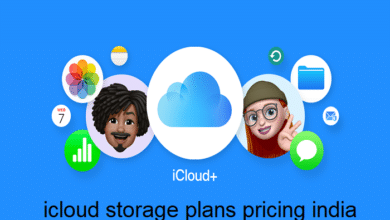iCloud Login Find My iPhone: A Complete Guide to Protecting Your Apple Devices

In today’s world, smartphones have become a central part of our lives. They store important information, facilitate communication, and connect us to the digital world. For iPhone users, the Apple ecosystem offers a set of powerful tools designed to enhance device security. One of the most important features for protecting your device and data is “iCloud Login Find My iPhone.” This feature allows you to locate, secure, and even erase your iPhone remotely if it’s lost or stolen. In this comprehensive guide, we will explore how “iCloud Login Find My iPhone” works, how to set it up, and how to use it effectively to safeguard your devices.
What is iCloud Login Find My iPhone?
“iCloud Login Find My iPhone” is a feature built into Apple’s iCloud service that enables users to track their lost or stolen iPhones, iPads, MacBooks, and other Apple devices. By logging into your iCloud account, you can use the Find My iPhone feature to pinpoint the exact location of your device on a map. Additionally, it offers a range of security options such as remotely locking your device, playing a sound to locate it, and erasing all its data to protect your privacy.
To use iCloud Login Find My iPhone, you must first ensure that Find My iPhone is enabled on your device. Once it is activated, you can access it from any web browser by logging into your iCloud account.
Setting Up iCloud Login Find My iPhone on Your Device
Before you can use iCloud Login Find My iPhone, you need to ensure the feature is enabled on your Apple device. The process is simple and involves the following steps:
- Enable Find My iPhone:
Go to your iPhone’s Settings app. Tap on your name at the top, then select “iCloud.” Scroll down to find “Find My iPhone” and ensure it is turned on. You may also want to enable “Send Last Location” to automatically send your device’s last known location when the battery is low. - Sign in with Your Apple ID:
Ensure you are signed into your iCloud account with your Apple ID. This is essential for tracking your device using iCloud Login Find My iPhone. - Enable Location Services:
Make sure Location Services is enabled on your device, as this allows your iPhone to share its location with iCloud. You can find this option under the “Privacy” section in Settings.
Once you’ve followed these steps, your device will be ready to use the iCloud Login Find My iPhone feature in case you need to locate it in the future.
How iCloud Login Find My iPhone Works
When you log into your iCloud account and use Find My iPhone, several powerful tools come into play to help you locate your device. Here’s how it works:
- Locate Your Device:
After logging into iCloud, you can view a map that shows the real-time location of your device, as long as it is turned on and connected to the internet. If the device is nearby, you can zoom in to get a more precise location. - Play a Sound:
If you’ve misplaced your device in your home or office, you can use the “Play Sound” feature to make your iPhone emit a loud sound, helping you locate it quickly. - Lost Mode:
If your device is lost or stolen, you can put it into “Lost Mode” through iCloud Login Find My iPhone. This locks the device and displays a custom message with a contact number, enabling anyone who finds it to reach you. - Erase Your Device:
In the worst-case scenario where your device is stolen and you’re worried about your data, you can remotely erase all the information stored on it. This prevents unauthorized access to sensitive personal data. - Track Multiple Devices:
With iCloud Login Find My iPhone, you can track not just your iPhone but also other Apple devices linked to your Apple ID, such as iPads, MacBooks, and even AirPods.
What to Do if You Can’t Find Your iPhone Using iCloud Login Find My iPhone
Sometimes, despite using iCloud Login Find My iPhone, you may encounter situations where your iPhone is still not located. If this happens, here’s what you can do:
- Check for Location Settings:
Ensure that Location Services are turned on and that your device is connected to Wi-Fi or cellular data. If your device is offline, iCloud will display the last known location instead. - Wait for the Device to Come Online:
If your iPhone is offline, it may not show its location immediately. However, once it reconnects to the internet, you will receive an update on its location. - Use the “Notify When Found” Feature:
If your device is offline, you can select the “Notify When Found” option in iCloud Login Find My iPhone. This will send you an email as soon as the device is located. - Contact Your Carrier:
If your iPhone is still not found, contact your mobile carrier to report the loss or theft. They may help by suspending service or providing additional tracking information. - File a Report:
If you believe your device has been stolen, consider filing a report with local law enforcement. Provide them with the information from iCloud Login Find My iPhone, including the device’s serial number and location details.
iCloud Login Find My iPhone vs. Other Tracking Methods
While iCloud Login Find My iPhone is an excellent tool for locating lost devices, there are other tracking methods available. Here’s how iCloud compares to some of the other options:
- Third-Party Tracking Apps:
Several third-party apps offer tracking services similar to iCloud Login Find My iPhone. However, these apps may not offer the same level of integration with Apple’s ecosystem or the security features that come with iCloud. - Google’s Find My Device:
For Android users, Google offers a similar service called “Find My Device.” While it offers many of the same features as iCloud Login Find My iPhone, it is limited to Android devices and doesn’t work for Apple products. - Bluetooth Trackers:
Devices like Tile use Bluetooth technology to help you track your lost items. While these are great for locating smaller devices like keys or wallets, they are less effective for tracking larger items like iPhones over long distances. - SIM Card Tracking:
Some mobile service providers offer SIM card tracking features that can help locate your device. However, these services are often not as accurate as iCloud Login Find My iPhone and require a subscription. - iCloud vs. Android Device Management:
iCloud Login Find My iPhone is a powerful solution for Apple users, but Android devices offer similar features through Google’s Device Manager. The major difference is that iCloud integrates seamlessly into the Apple ecosystem, providing better functionality for iPhone, iPad, MacBook, and other devices.
Common Problems with iCloud Login Find My iPhone
While iCloud Login Find My iPhone is a reliable tool, users may occasionally experience issues. Here are some common problems and solutions:
- iCloud Not Updating Location:
If your iPhone is not showing its location on the map, ensure that Location Services are enabled, the device is connected to Wi-Fi or cellular data, and iCloud is signed in correctly. - Device Not Appearing in iCloud:
If your device is missing from the iCloud Login Find My iPhone page, double-check that you are signed in with the correct Apple ID. If the device is not linked to your Apple ID, it won’t show up in iCloud. - “Device Offline” Status:
If your device shows as offline, it may not be connected to the internet. Wait for the device to come online, and iCloud will update its location as soon as possible. - Battery Drain Issues:
Some users report that their iPhones drain faster than usual when Find My iPhone is enabled. To address this, try adjusting your device settings, such as turning off “Share My Location” when not needed. - iCloud Login Issues:
If you can’t log into iCloud to use Find My iPhone, ensure that your Apple ID and password are correct. If you’ve forgotten your password, use the “Forgot Password” option to recover your account.
Conclusion
The “iCloud Login Find My iPhone” feature is an essential tool for anyone who owns an Apple device. It offers peace of mind by enabling users to track, lock, and even erase their devices remotely in case of loss or theft. Setting up this feature is easy, and it integrates seamlessly into the Apple ecosystem, ensuring that all your devices are protected. While there are other tracking methods available, iCloud Login Find My iPhone remains one of the most reliable and secure options for iPhone users. By understanding how to use this feature, you can ensure that your Apple devices are safe and easily recoverable if lost.
FAQs
- How do I set up iCloud Login Find My iPhone?
To set up iCloud Login Find My iPhone, go to Settings on your iPhone, enable Find My iPhone under iCloud, and ensure you are signed into your Apple ID. - Can I use Find My iPhone if the device is turned off?
No, Find My iPhone requires the device to be turned on and connected to the internet. If the device is offline, you will see its last known location. - How do I track my iPhone using iCloud?
Log into your iCloud account from a web browser, select Find My iPhone, and locate your device on the map. You can also use features like “Play Sound” or “Lost Mode.” - What happens if I erase my iPhone remotely?
If you erase your iPhone remotely through iCloud Login Find My iPhone, all data on the device will be wiped, including personal information and apps. This action is irreversible. - Can I track multiple devices with iCloud Login Find My iPhone?
Yes, you can track all devices linked to your Apple ID using iCloud Login Find My iPhone, including iPhones, iPads, MacBooks, and even AirPods.





